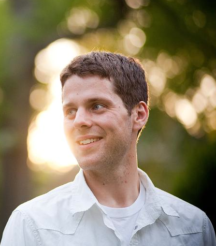How fortunate to be able to attend a concert and hear a great symphony for the first time, live – even after a lifetime spent mostly in the concert halls of the world. Such was my experience on a recent Thursday evening, spent not in Carnegie Hall, but in Dana Auditorium on the campus of Guilford College. This was not the Concertgebouw Orchestra of Amsterdam, but with a student orchestra, albeit an outstanding one, directed by an outstanding conductor, Grant Cooper.
The Eastern Music Festival was barely in its third week, and this was the first all-student concert of this month-long extravaganza which features not one, but two 100-piece student orchestras of quasi-professional caliber as well as the Eastern Festival Orchestra, a fully professional ensemble composed of the finest virtuosi from the plethora of fine orchestras across the land, under the direction of the world-class conductor, Gerard Schwarz!
Did you miss it? Shucks! But there are still three dozen concerts and recitals – check the sidebar for details!
The concert opened with a ten-minute performance of an adaptation of a work originally composed for solo cello accompanied by a string quartet. The 2005 In Memoriam was composed by Gerard Schwarz as a memorial tribute to the fine Russian cellist and teacher, David Tonkonogui, a member of the Seattle Symphony at the time of his death. Since then, the piece has been reworked for string orchestra and full orchestra. It has also been rewritten for euphonium (a member of the horn/tuba brass family, playing as the tenor in the same way the cello is the tenor of the string family) accompanied by the concert-band instrumentation. This evening celebrated its “world premiere” as a work for euphonium and symphony orchestra. The soloist was the extraordinary euphonium soloist, Demondrae Thurman. Although short, the work covers many moods, the rich orchestral palette (note the diatonic horn cluster!) essentially serving to highlight the warmth of the euphonium, which opens and closes alone.
The first movement of the Mahler Symphony No. 9 lasts at least half an hour and was filled with surprises as the mood shifted from strong and passionate to hesitant and cautious. The fortes in the first movement were lovely and well balanced, a characteristic of Mahler’s orchestration. There was a lovely duet between flutist Zander Day and principal hornist, Emmett Conway, who had many outstanding solos and led a horn section that was generally top notch! Kudos also to outstanding first trumpet solos from Grace O’Connell!
The second movement was a bold and sassy “Ländler” (the peasant equivalent of the aristocratic minuet and a precursor of the waltz), aptly described by Dr. Greg Carroll as “a witch’s Sabbath” in his pre-concert talk in the Moon Room of the Dana Auditorium.
The third movement is titled “Rondo: Burleske” and was the most contrapuntal of the whole symphony. I was shocked to hear “parallel fifths” (two or more consecutive intervals of a perfect fifth; they tend to sound hollow and inexpressive and have been frowned on in counterpoint for the last 300 years) between flute and oboe as one chased after the other.
The fourth and closing movement is an Adagio which is built around the “gruppetto,” a sort of musical “turn” which remains provocative for most of the movement, but reverses its direction at the end, bringing a sense of peace and closure. An awkward moment occurred at the end of the concert, after the last wisps of dying sound had passed – a dozen audience members, thinking the piece over (it was!), started to applaud… then hesitated, embarrassed that they had shattered a mood the conductor was endeavoring to prolong.











